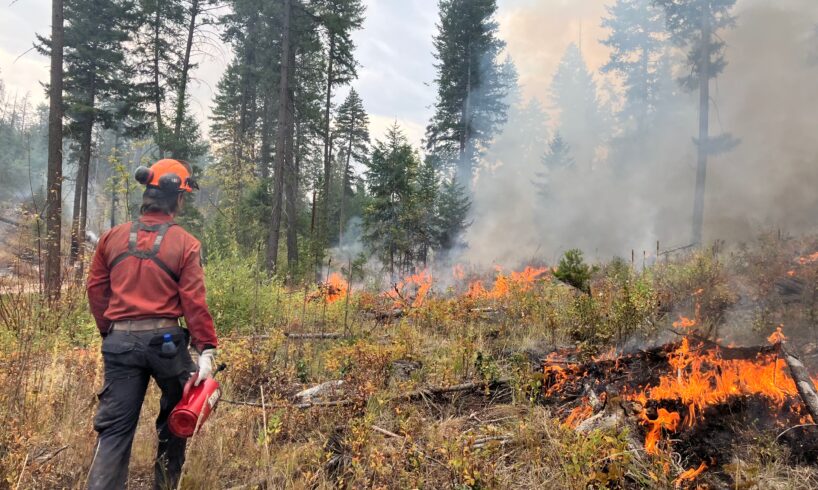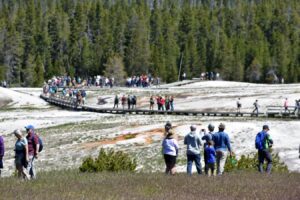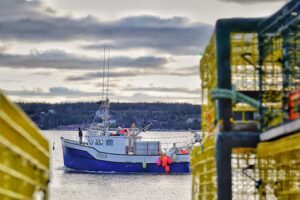
Open this photo in gallery:
Canada’s emergency management minister recently floated creating a federal agency to co-ordinate responses to natural disasters, including wildfire.HO/The Canadian Press
As Canada suffered one of the most destructive fire seasons in its history, Eleanor Olszewski, the federal emergency management minister, floated the idea of creating a federal agency to co-ordinate the country’s response to natural disasters, including wildfire. She has committed to revealing further details this fall.
Kim Connors, who retired this year as executive director of the Canadian Interagency Forest Fire Centre (CIFFC), spent more than four decades fighting wildfires, including as director of provincial wildfire programs in New Brunswick and Saskatchewan.
He spoke to The Globe and Mail about why he opposes Ms. Olszewski’s proposal, and why Canadians should start preparing now for next year’s fire season.
What problems did you see with Canada’s existing system in your final years at CIFFC?
The current system was not able to keep up with the demands brought on by climate change and the worsening forest fire situation across Canada.
The wildfire system was based on the sharing of resources across the many agencies. That worked very well when wildfire seasons tended to be regional, at different times of year. So it would start in the east in the spring of the year, into Quebec, slowly into Ontario, then the Prairies and B.C., ending in August and September.
What survivors learned from Canada’s worst wildfires
But now the fire season seems to be simultaneous across the country. We’ve seen it in the last five to seven years. It’s becoming worse. The ability to exchange resources between agencies is now stretched beyond capacity.
This year, the fire season was early May all the way into – I mean, there’s still fires on the East Coast. But 2025 could have looked a lot worse. Quebec happened to be quiet. If Quebec had not supported Atlantic Canada, Newfoundland, Nova Scotia and New Brunswick would have had a very different outcome.
When did we have the most resources, and how much have resources declined since then?
During the 1990s and the early part of this century, we probably had the most resources. But there were fewer fires during some of the years since then, for example in the past 10 years in places like Atlantic Canada. And Ontario had a number of years with quieter seasons, and Quebec as well. And so some of those programs downsized. Alberta downsized a bit.
They have been turning around since the early 2020s. But it takes a while to get back up to what’s required. Plus, we need more resources than we ever had before.
To what extent is this merely a problem of insufficient resources, versus other contributing factors?
Clearly, more resources is not the only answer. We have to be focused on communities and society becoming resilient to wildfires. We really need to focus on the mitigation side and building true whole-of-society programs that are strong in practice, not just in rhetoric. And that’s very hard to do.
Open this photo in gallery:
In June, 2021, a wildfire destroyed most of the town of Lytton, B.C., shown here nearly a year later.Melissa Tait/The Globe and Mail
In what ways are our communities not resilient to fire right now?
At all levels of society, there’s an understanding that it’s somebody else’s responsibility. Or the government will protect us – they’ll come with airplanes and we’ll be fine. But we need to really sit down with community leaders and say, no, we need communities to be in charge of their own destiny. And then give them the tools to be able to do that.
What are some examples of what communities should be doing?
Number one is to have a plan. There are templates out there that communities can use to build their own wildfire protection plan. They could do assessments to see how vulnerable their community is to a wildfire.
FireSmart Canada teaches things they can do to protect their individual properties and homes. From a community level, there are other things they can do in terms of fire breaks, preparedness to help the initial response, as opposed to waiting for other levels of government. Even in the early days of designing subdivisions and building homes – there’s things that start right at the fundamental start of creating a community.
The past few federal emergency management ministers and public safety ministers have discussed creating a national fire agency. What’s your assessment of that proposal?
I don’t see it as being helpful at all. It’s another layer of federal bureaucracy that’s not required. It’s going to use up a lot of resourcing, mostly in terms of funding, because it’ll be costly to set up and support.
Darkened by ash from wildfires, glaciers in the Canadian Rockies are melting even faster
The other problem is that it puts a lot resourcing at one level of government that is subject to election and budget cycles. It’s sometimes said this federal agency would be “FEMA-like.” But if you look south of the border, FEMA [the U.S. Federal Emergency Management Agency] is being gutted under the current administration. And so they’re losing resources rapidly, and they’re not going to be as effective as they’ve been over the years.
I think there is a role for our federal government. And I think it needs to be different than what it was in the past, where provinces and territories simply asked for more funding.
The federal government hasn’t said much about what it’s planning to do, but it has suggested creating regional water bomber fleets. What do you think of that?
I think that is a good idea. If the federal government is to invest in those types of expensive resources, then I think they need to be equally available to all provinces and territories and the park system. I don’t think it requires a national FEMA-like agency to administer it.
Open this photo in gallery:
A water bomber over the Paddy’s Pond wildfire, just outside St. John’s, N.L., in August.Paul Daly/The Canadian Press
What else should Ottawa be doing?
They need to look at how they can support resourcing – not just aircraft, but human resources. And there is a sunset on their current investment in mitigation, in FireSmart Canada. They need to establish long-term funding to support FireSmart Canada in reaching all provinces and territories and within the national parks.
The federal government has announced a Canadian Centre for Recovery and Resilience (a partnership with the Institute for Catastrophic Loss Reduction aimed at helping communities rebuild from disasters in ways that improve resilience). How far will that go in achieving what you’re hoping will happen, and where does it fall short?
I’m excited about it. The problem will be if they can’t get the individual players to the table with humility, having the conversations I’ve described, forgetting about the hard white lines. The big risk is that it could end up being just more of the same rhetoric around integrated fire management or whole-of-society management, versus truly creating programs and policies that get us there.
Why are the various provincial and federal agencies and other actors not able to come together in this sort of whole-of-society approach that you’re calling for?
There’s great expertise in this country. It’s second to none and it’s essential. But it’s also the same thing that’s limiting the conversation, and I am frustrated with it. We’re boiled in our bureaucracy, our individual silos of understanding, our authorities, regulations and policies. We need to lay all those off to one side and say: What is the end state we want?
This interview has been edited and condensed.





